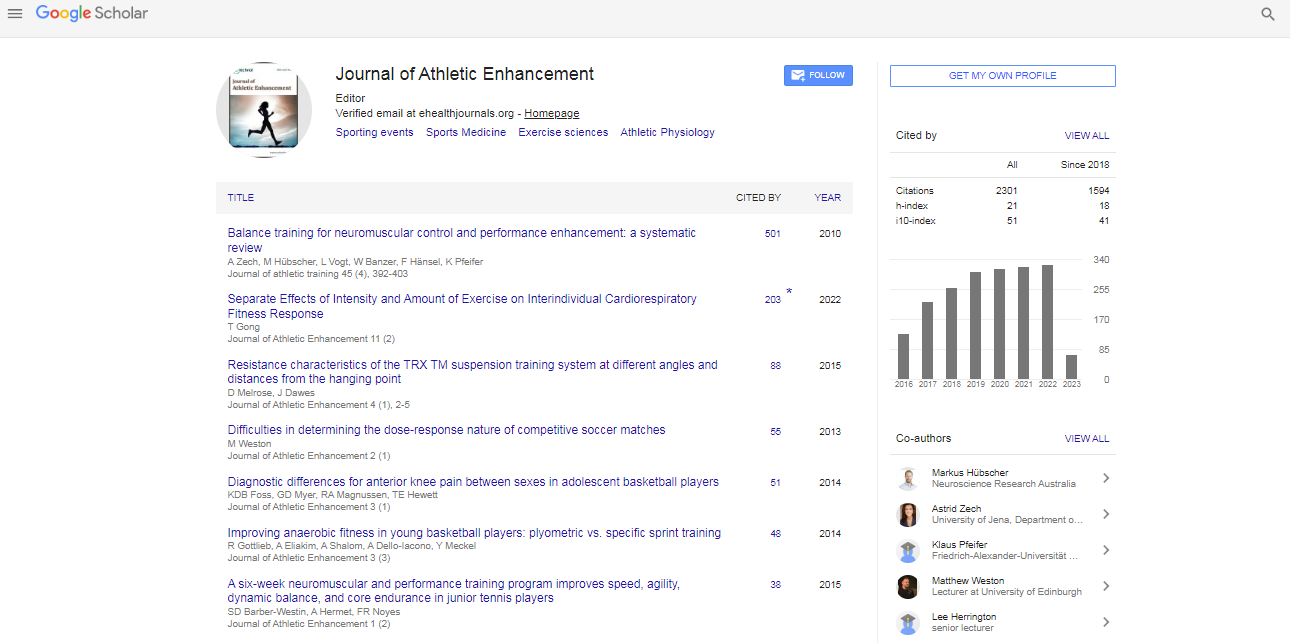Research Article, J Athl Enhanc Vol: 7 Issue: 3
Monitoring of In-Season Salivary Alpha Amylase Trends for Professional Australian Rules Footballers
Coad S1*, Wellman A1, Gray B1 and McLellan C2
1Faculty of Health Sciences and Medicine, Bond University, Queensland, Australia
2School of Health and Wellbeing, University of Southern Queensland, Ipswich, Queensland, Australia
*Corresponding Author : Sam Coad, BSpExS (Hons)
Faculty of Health Sciences and Medicine, Bond University, Robina, QLD, AUS, 4226, Australia
Tel: 7342779151
E-mail: Scoad123@gmail.com
Received: May 03, 2018 Accepted: May 30, 2018 Published: June 06, 2018
Citation: Coad S, Wellman A, Gray B, McLellan C (2018) Monitoring of In-Season Salivary Alpha Amylase Trends for Professional Australian Rules Footballers. J Athl Enhanc 7:3. doi: 10.4172/2324-9080.1000295
Abstract
Salivary Alpha Amylase has been considered a surrogate biomarker of autonomic nervous system, and may be considered useful to highlight periods of physiological fatigue in athletes. Novel lateral flow technology has allowed for rapid salivary assessment and offers an alternative practical method for monitoring salivary markers such as Alpha Amylase in AFL athletes throughout the in-season. Therefore, the present study aimed to (1) examine week-to-week and month-to-month variations in AFL athletes [sAA] throughout a 16 match period of the AFL in-season, and (2) examine the acute relationship between post-match measure of [sAA] and match-play exercise workloads. Twenty elite male Australian Rules Footballers (24.3 ± 4.2 years, 186.7 ± 7.3 cm, 87.6 ± 8.0 kg) were monitored throughout 16 in-season AFL matches for sAA taken 36-h post-match and exercise workloads (player load) using GPS IA. The present study utilized a linear mixed model analyses for time dependent changes in [sAA] and player load. A significant main effect was found for week-to-week analysis of 36-h post-match [sAA] (F (15, 36)=5.12, p<0.001) and for match-play player loads (F (15, 61)=2.33, p=0.011). Further a significant main effect (F (3 19)=11.88, p<0.001) was found for month-to-month changes in 36-h post-match [sAA]. Finally, high inter- (103%) and intra-subject (110 %) variation of [sAA] were found. The present study presents novel data of trends in 36-h post-match [sAA] for AFL athletes. Results demonstrated a significant changes in month-to-month 36-h post-match [sAA] peaking in the final month of the study. Month-to-month analysis of [sAA] may highlight an accumulative SNS fatigue effect throughout the AFL in-season, however results on a week-to-week basis need to be analysed with caution given the high levels of intra- and inter-subject variation.
 Spanish
Spanish  Chinese
Chinese  Russian
Russian  German
German  French
French  Japanese
Japanese  Portuguese
Portuguese  Hindi
Hindi 
